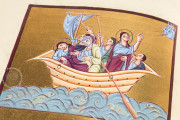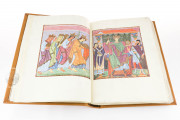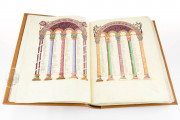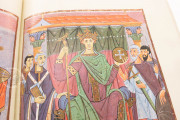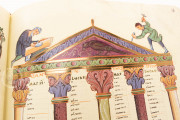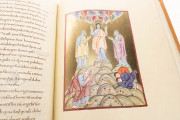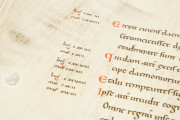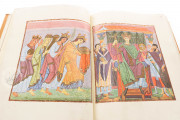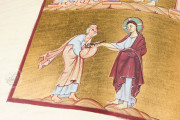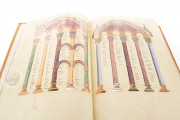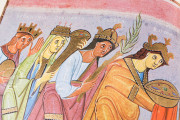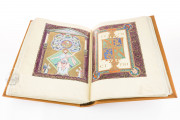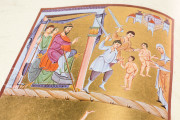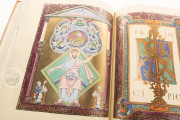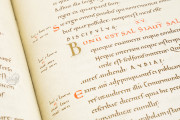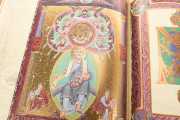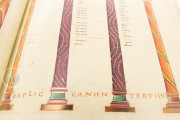The Gospels of Otto III codex is one of the most significant illuminated Ottonian manuscripts from the early middle ages to ever reach modern times. The codex is thought to have been written and illuminated around the tenth century in the heart of Europe, where Austria, Switzerland, and Germany meet. With its one double-page miniature, thirty-four full-page miniatures, and twelve canon tables—all magnificently illuminated—it is an outstanding example of the superb production of the Benedictine abbey of Reicheneau on Lake Constance.
The Liuthar Group and the Reichenau School
Iconography-wise, the manuscript of Gospels of Otto III belongs to a group of codices stylistically related, generally known as the Liuthar group, considered to represent the pinnacle of Ottonian art and named after a monk who went by the name of Liuthar, around the year 1000.
With more than thirty miniatures, the Gospels of Otto III exhibits extensive illustrations of the portraits of the four evangelists (Matthew, Mark, Luke, John), scenes from the life of Christ, and the portrait of Otto III (fol. 24r). This manuscript is a marvelous example of the skills of the Reicheneau School at their best.
Ottonian Book Painting at Its Zenith
Due to its opulence and artistic excellence of the Christological picture cycle, this codex is to be considered a true masterpiece of Ottonian book painting. An example of such artistic excellence is exhibited in the Adoration of the Magi miniature (fol. 29), where, similar to the rest of the book, the artist extensively indulges with the use of gold. Specifically, it is worth noticing the golden ground filling in the pictures, serving as a wall of light behind the figures.
The combination of gold, colors, and details of the Gospels of Otto III favors a reflection of the supernatural. The evangelists are portrayed no longer confined to their studies, but enthroned as ethereal beings surrounded by flashes of light. The evangelists and the rest of the figures in general are represented staring through the page and the reader, almost reaching for another world of celestial inspiration.
Statement of Power and Status
The “looking out” feature is to be noted in the double-page portrait of the ruler, which strikes a commanding note. The idea of the double-page miniature, where the emperor's portrait is located, seems to be taken from an earlier source, namely the Codex Aureus of St. Emmeram.
In the Gospels of Otto III, the young emperor is pictured on his throne, with the eagle scepter and orb in his hands, surrounded by spiritual and temporal representatives, among which he is the principal figure, hierarchically superior.
To the left (fol. 23v) are the personifications of the provinces approaching the ruler of the Holy Roman Empire, echoing the adoration of the magi scene, possibly aiming to underline the emperor's almost divine nature.
Beautiful Example of Caroline Minuscule
The Gospels of Otto III provides a beautiful example of the Caroline or Carolingian minuscule developed in the scriptorium of Charlemagne (where Ottonian book painting was also born). It is worth noticing the use of some ligatures such as st, and the use of long s in addition to the standard one.
Otto III's Young Death and His Successor
The commissioner and patron was very possibly the emperor himself. Unfortunately, Otto III died at the age of twenty-one, so the codex was inherited by his successor, King Henry, who left it to the Bamberg cathedral.
The binding has largely been preserved until modern times. Jewels, gems, and pearls act as a frame for the centerpiece, which consists of a Byzantine ivory picture of the death of the Virgin Mary from the tenth century.
We have 1 facsimile edition of the manuscript "Gospel Book of Otto III": Das Evangeliar Ottos III facsimile edition, published by Mueller & Schindler, 1978
Request Info / Price


